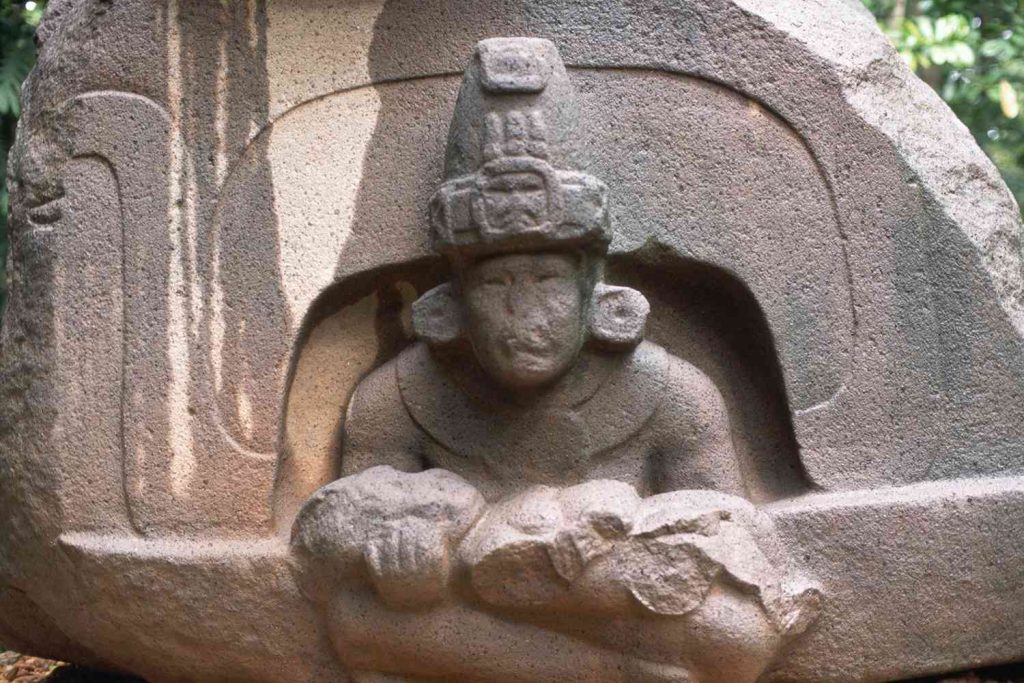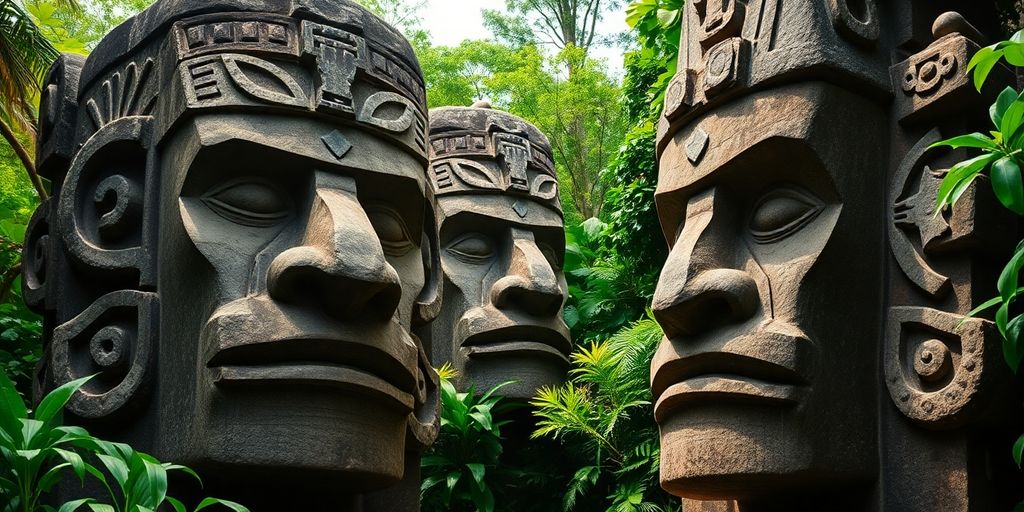In 1939, Mathew Sterling embarked on a groundbreaking excavation in Veracruz, Mexico, aiming to uncover the mysteries of the Olmec civilization. This ancient culture, often overshadowed by later Mesoamerican societies, was revealed to be the first major civilization in the region, leaving an indelible mark on history.
Key Takeaways
- The Olmec civilization predates many known Mesoamerican cultures, with evidence suggesting their existence as early as 32 BCE.
- They were pioneers in agriculture, art, and urban planning, influencing subsequent civilizations like the Maya and Aztecs.
- The Olmec’s contributions include the Mesoamerican calendar, the ballgame, and significant religious practices.
The Discovery of the Olmec
In the late 1930s, Sterling’s work at Tres Zapotes led to the discovery of a broken Olmec stela with a partial date inscription. This finding, which suggested a date of September 3, 32 BCE, was initially met with skepticism. However, subsequent carbon dating and further discoveries validated Sterling’s claims, establishing the Olmec as the earliest known civilization in Mesoamerica.
The Rise of Civilization
The Olmec civilization flourished from around 1700 BCE to 400 BCE, primarily along the Gulf Coast of Mexico. This period marked a significant transition from small farming villages to large urban centers. The Olmec established cities like La Venta, characterized by planned layouts, monumental architecture, and a vibrant cultural life.
- Key Features of Olmec Cities:
- Large urban settlements with elite residences.
- Temples and ceremonial centers.
- Rich artistic expressions, including colossal sculptures.
Artistic Achievements
The Olmec are renowned for their distinctive art, particularly their colossal heads, which are carved from basalt and weigh several tons. These heads are believed to represent Olmec rulers, showcasing their unique facial features and headgear. The logistics of transporting these massive sculptures highlight the organizational skills of Olmec society.

- Notable Olmec Artworks:
- Colossal Heads: Ranging from 5 to 11 feet tall, with the largest exceeding 25 tons.
- Stone Altars: Initially thought to be altars, these are now believed to be thrones for rulers, often depicting figures in transformative states.
- Jade Figurines: Found in burial sites, these figurines provide insight into Olmec mythology and social structure.
Religious Practices and Beliefs
Olmec art also reflects their religious beliefs, particularly the concept of transformation. The depiction of “were-jaguars”—figures that blend human and jaguar features—suggests a belief in shamanism and the ability to connect with the spiritual world. This theme of transformation is prevalent in Olmec iconography and is believed to have influenced later Mesoamerican religions.
- Key Religious Concepts:
- Shamanism: Central to Olmec spirituality, with shamans acting as intermediaries between the physical and spiritual realms.
- Bloodletting: A ritual practice that involved drawing blood to connect with ancestors and deities.
The Mesoamerican Calendar and Writing
The Olmec played a crucial role in the development of the Mesoamerican calendar, which became a foundational aspect of later cultures. They also utilized a numerical system for recording dates, indicating an early form of writing. Although the Olmec script remains undeciphered, it laid the groundwork for subsequent writing systems in Mesoamerica.
The Ballgame: A Cultural Legacy
The Mesoamerican ballgame, a significant cultural and religious ritual, is believed to have origins in Olmec society. While formal ball courts have not been found at Olmec sites, evidence of rubber balls dating back to 1500 BCE suggests that the game was played during this time.
Trade and Influence
The Olmec were not isolationists; they engaged in extensive trade across Mesoamerica, exchanging goods like rubber, cacao, and pottery for jade and obsidian. This trade network facilitated the spread of Olmec culture and ideas, influencing neighboring societies.
Conclusion: The Enduring Legacy of the Olmec

The Olmec civilization, often referred to as the “mother culture” of Mesoamerica, laid the foundation for many aspects of later civilizations. Their innovations in art, religion, and urban planning continue to resonate throughout Mesoamerican history. As we explore the legacies of subsequent cultures, the influence of the Olmec will remain a pivotal point of reference in understanding the rich tapestry of Mesoamerican civilization.
Suggested Read: Ancient Mesopotamia: A Journey Through Time



Leave a Reply
You must be logged in to post a comment.